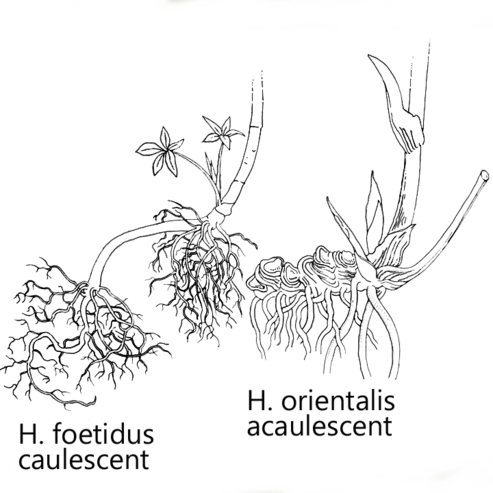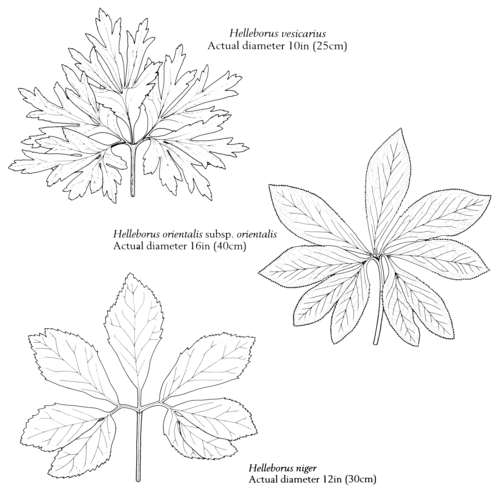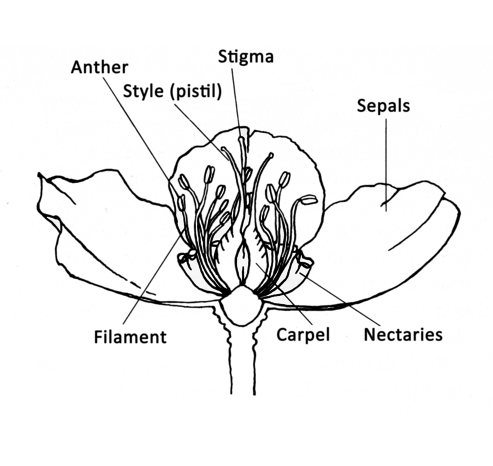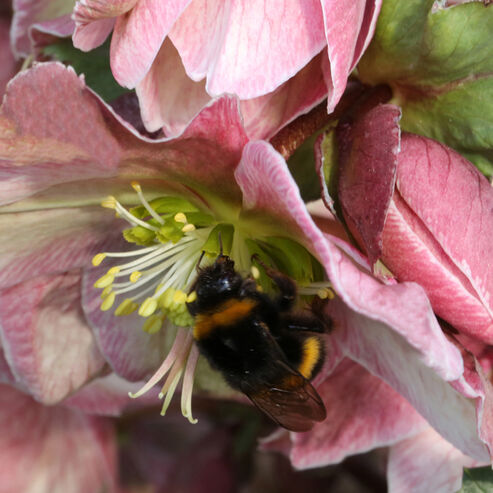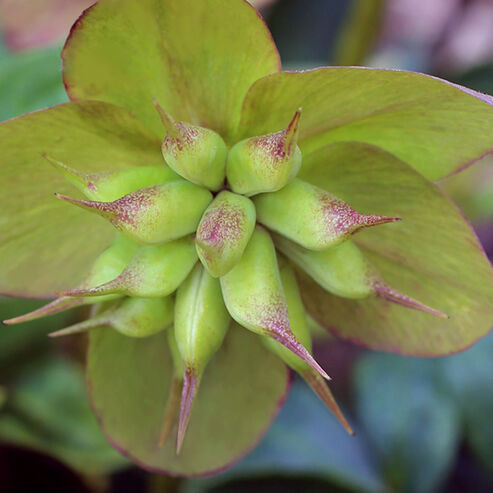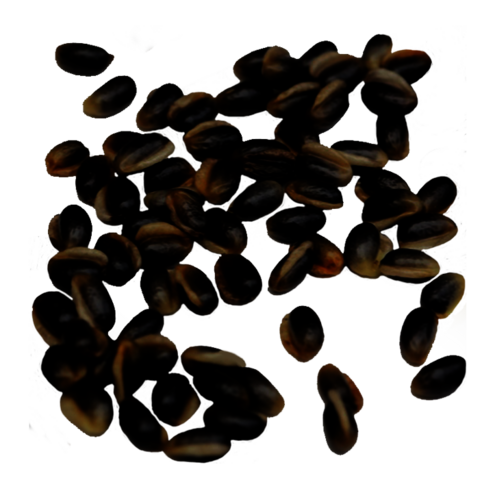HELLEBORUS SPECIES IN BOTANY
Helleborus species are differentiated by the way they produce shoots above the ground. There are two main groups that differ in their stems and rhizomes.
The stemmed (caulescent) species grow their rhizomes from the thickened lignified hypocotyl (stem of a germinating seedling) and the bottom part of the stem. The bottom stem branches by growing new shoots from axillary buds. These species produce secondary roots on the primary roots. The stemmed species cannot be propagated by division.
In acaulescent (stemless) species, the primary root dies as the seedling develops into an adult plant. Each year, the plants produce new adventitious roots on the new rhizome side shoots. Old roots are thick, fleshy and often a brownish or blackish colour. The acaulescent species include Lenten Roses and their parents. They are normally fairly easy to propagate by division.
LEAVES
The leaves of Helleborus plants are key features for identifying the species, because they are very specific. They are smooth initially and turn leathery later. The palmate or pedate leaves are deeply cut, often with a serrated or dentate edge. All species have tripartite leaves, with leaflets that are also divided. The leaf size varies between species.
(Illustration: Rice, G.und Strangeman, E., The Gardener‘s Guide to Growing Hellebores, Timber Press Inc., Portland, Oregon, 1994)
Flowers
Botanically speaking, Helleborus flowers are very special. Unlike the blooms of most other flowering plants, hellebore flowers do not consist of petals, but of sepals, which normally actually serve to protect the flower. In the course of evolution, the Helleborus petals developed into nectaries (short tubular flower organs). As the name indicates, they produce nectar to attract the few insects that are active at the time of year when hellebores flower. Some wild bee species are active on warm days early in the year. The number of nectaries varies between five and twenty and differs both between and within species. The flower is, by and large, non-specialised to facilitate pollination and can consequently be pollinated by a large variety of insect pollinators. The sepals remain on the fruiting head until the seeds have matured. Without detriment to their beauty, they change colour after the flower has been pollinated.
(Illustration: Rice, G.und Strangeman, E., The Gardener‘s Guide to Growing Hellebores, Timber Press Inc., Portland, Oregon, 1994)
The stamens are long white filaments with bilocular anthers. Each flower can have up to 150 stamens. Before they mature, the stamens are closed around the carpels, the flowers' female reproductive organs. They do not elongate until a later stage of flower development.
The number of a flower's carpels varies between three and ten. Helleborus flowers are protogynous. This means that the carpels mature before the stamens (the male reproductive organs) do. This sequence encourages cross-pollination, although all hellebores are actually self-fertile.
Helleborus flower colours range from green shades, white and yellow, to pink and red hues. Flower scent is unobtrusive, if existent at all in Helleborus species. Helleborus odorus (odorare = Latin for emanating scent, fragrance) is an exception. Flowers of Helleborus liguricus are also reported to have a pleasant scent.
Fruit
The fruiting head of Helleborus consists of as many follicles as ovaries that were previously pollinated. After pollination, the nectaries and stamens have accomplished their purpose and fall off as the seeds develop.
The sepals change colour after pollination but remain on the fruiting head until the seeds have matured. The bottom part of the follicles can be grown together, depending on the species. The discoloured sepals contain chlorophyll with which photosynthesis can take place.
As soon as the seeds are ripe, each follicle splits open from top to bottom, releasing the seeds it contains.
Seeds
Helleborus seeds are attached along the two edges of the open carpels.
In most species, the seeds are a black colour with an elongated or kidney shape. As soon as the seed coat has dried, the seeds turn a dull brown or black colour. The amount of seeds per capsule ranges from ten to twenty.
However, there are differences between species. For example, Helleborus vesicarius generally only produces one to two seeds per follicle.

